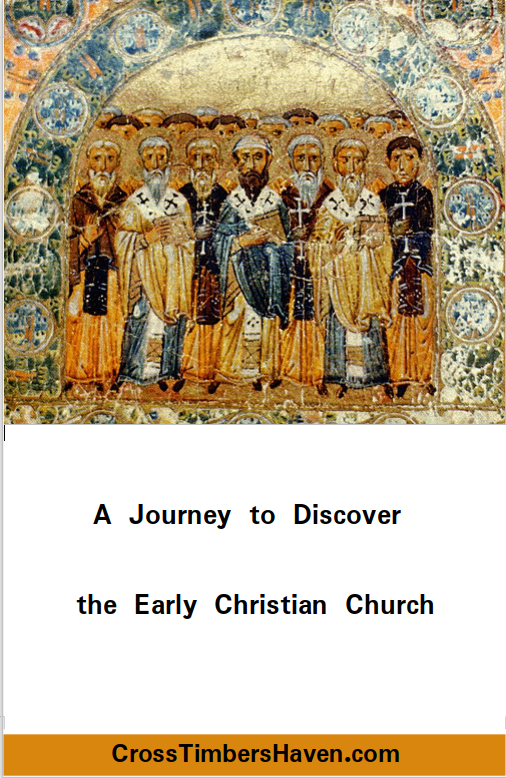The Importance of Early Church History
[You can download this article as an eBook to read on your computer or reading device at your leisure.]
Beginning of the Church
 The Church is a physical entity and has a definite beginning. The Church was founded upon Christ Jesus, “and on this rock I will build My church, (Matt. 16:18).” The start of the church began at Pentecost when the Holy Spirit descended upon the Apostles and empowered them,
The Church is a physical entity and has a definite beginning. The Church was founded upon Christ Jesus, “and on this rock I will build My church, (Matt. 16:18).” The start of the church began at Pentecost when the Holy Spirit descended upon the Apostles and empowered them,
“When the Day of Pentecost had fully come, they were all with one accord in one place. And suddenly there came a sound from heaven, as of a rushing mighty wind, and it filled the whole house where they were sitting. Then there appeared to them divided tongues, as of fire, and one sat upon each of them. And they were all filled with the Holy Spirit and began to speak with other tongues, as the Spirit gave them utterance, (Acts 2:1-4).”
From the beginning of Christ's church it had three important characteristics:
- Details
- Written by: Thomas Cloycesen
- Category: Journeys
- Hits: 8177
Read more: A Journey to Discover the Early Christian Church, Part I
This is Part II of a series of articles. Part I can be read here.
You can download this article as an eBook to read on your computer or reading device at your leisure.
Holy Tradition
The Four Attributes of Holy Tradition
Holy Tradition can be defined by stating that the historical New Testament Church has always believed in a tradition that includes the following four attributes:
-
Apostolic teaching, that which Jesus Christ delivered to His apostles: “according to the glorious gospel of the blessed God which was committed to my [Paul’s] trust, (1 Timothy 1:11).”
-
The Church, which Jesus established (Matthew 16:18) in the first century at Pentecost (Acts 2:1-4)--the Church being the keeper of apostolic teaching (1 Timothy 3:15).
-
Church Fathers, who are the successors of the apostles (2 Timothy 2:2), authors and interpreters of oral and written teachings, holders of councils (and providers of the creeds), and canon of Scripture canonization.
-
Scripture (the Bible), which emerged from the life of the early Church and was completed late in the fourth century.
- Details
- Written by: Thomas Cloycesen
- Category: Journeys
- Hits: 8065
Read more: A Journey to Discover the Early Christian Church, Part II
This is Part III of a series of articles. Part II can be read here. You can download this article as an eBook to read on your computer or reading device at your leisure.
Holy Scripture
The Canon of Scripture
The New Testament scriptures exist as the first century writings by the apostles, by Jude, and by Luke that describe and record what Jesus taught and instructed them and what they faithfully delivered to the early Church’s converts. These writings function to preserve some of the written apostolic teachings, which early Church Fathers were able to interpret based upon what they had also been taught by Jesus’ disciples through oral traditions. This was the method used by the early Church Fathers: the Church Fathers instructed the faithful through the use of oral and written apostolic teachings.
- Details
- Written by: Thomas Cloycesen
- Category: Journeys
- Hits: 8403
Read more: A Journey to Discover the Early Christian Church, Part III
This is Part IV of a series of articles. Part III can be read here. You can download this article as an eBook to read on your computer or reading device at your leisure.
Afterwords
The previous three Sessions contain the bulk and the core aspects of my discovery of the Early Church. Indeed this is a short writing regarding the early history of the Church. Yet from this point forward it is a lot easier in determining which Christian tradition is closest to the tradition of the Apostles and of the early church fathers: any tradition that lacks or denies these apects of the early church is removed from the prospective list and considered a schism.
- Details
- Written by: Thomas Cloycesen
- Category: Journeys
- Hits: 7714
Read more: A Journey to Discover the Early Christian Church, Part IV